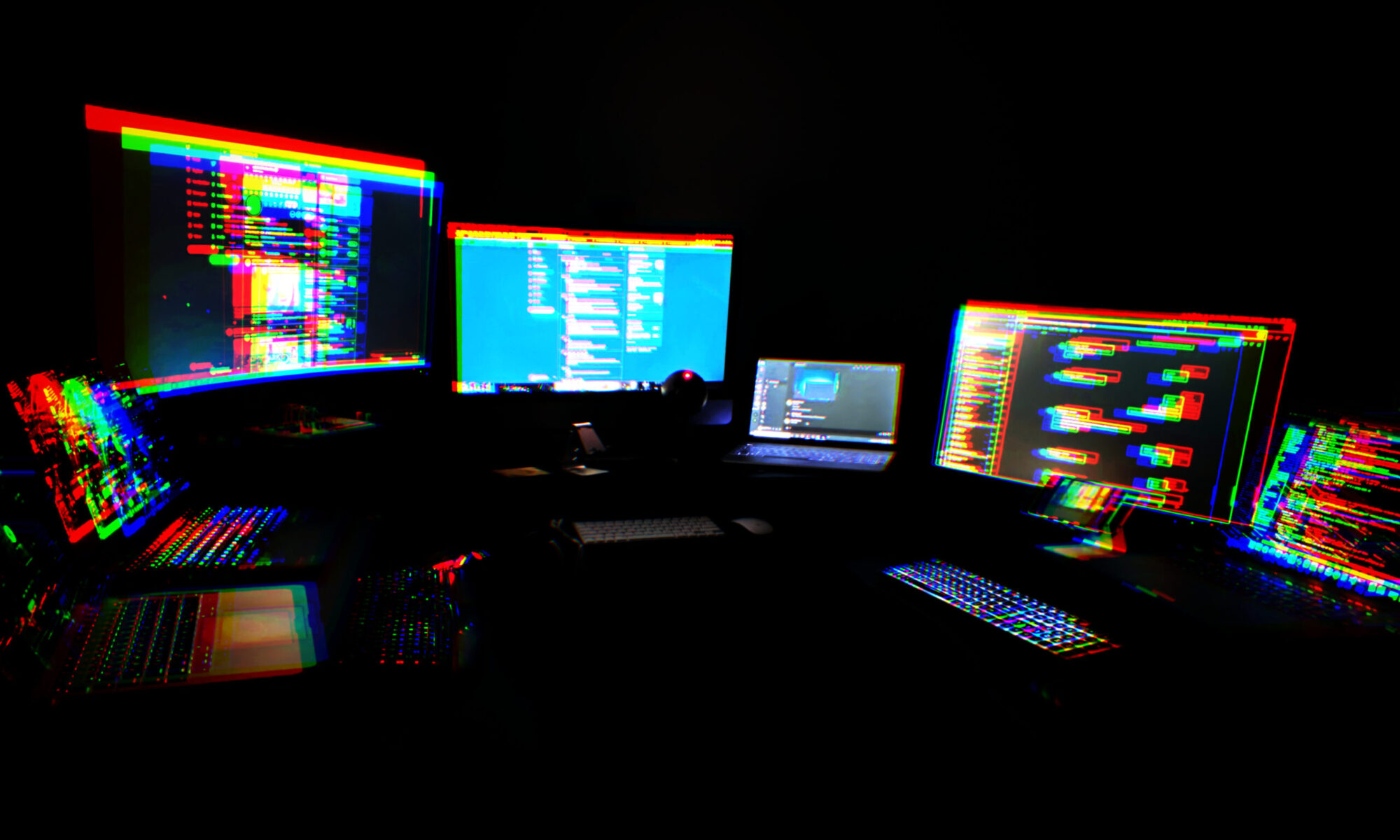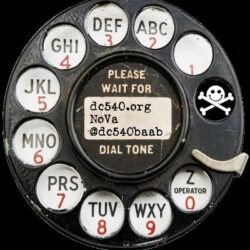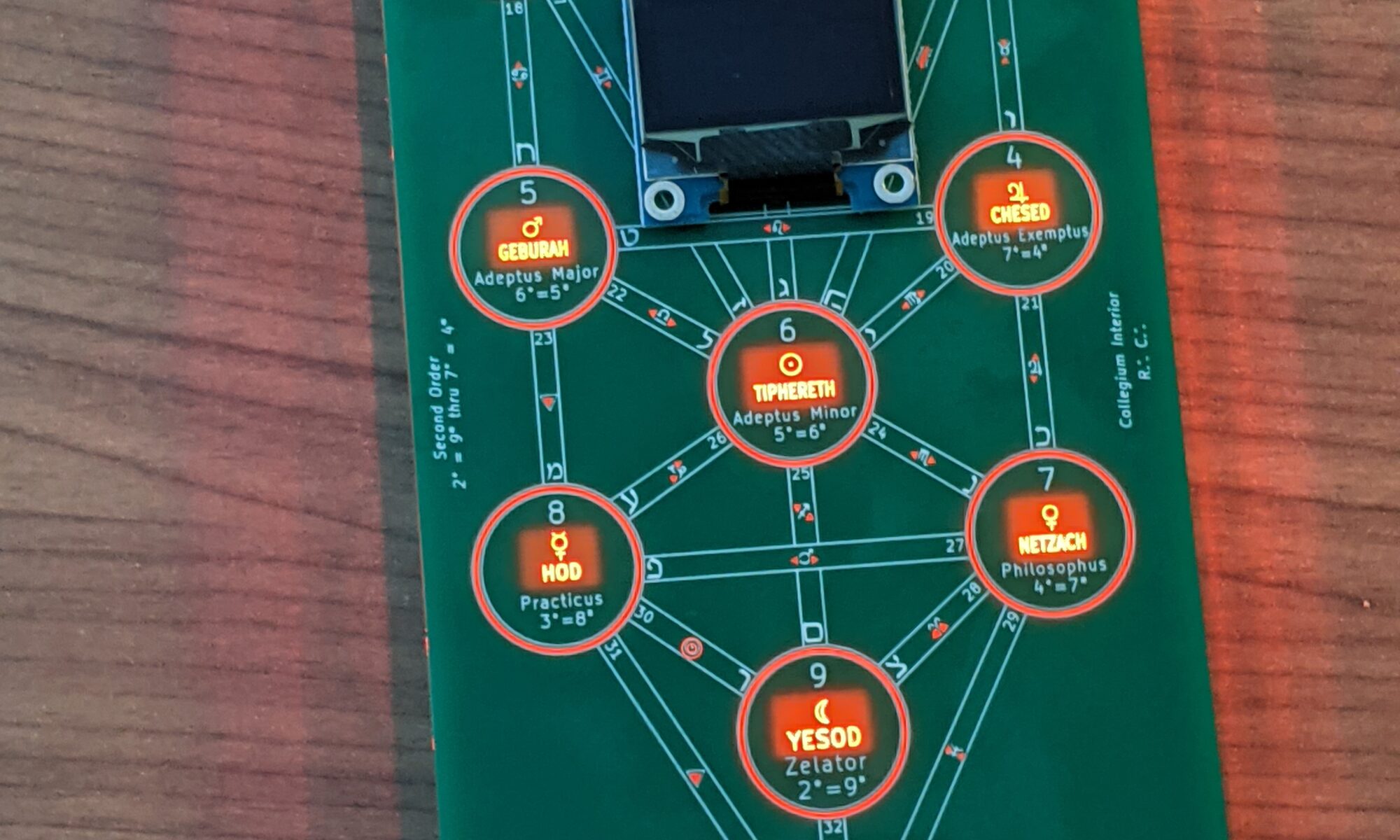So this year DC540 decided to go through the exercise of creating a badge for Def Con 29. None of us had ever done this before. The most any of us had done was design a very simple minibadge with just one LED and one resistor. But a bunch of us are #badgelife addicts.
We had started with the idea of a simple door-based badge design with an embedded game/challenge for our first badge. But ambition got the best of us, and honestly, we needed something to set our badge apart from every other badge out there. Something to make it unique. Go big or go home, right? And after a few iterations, and a planning meeting or three, an epiphany came. I realized that our challenge, which involved unlocking different “levels,” seemed to overlap nicely with the tree of life (Kabbalah) concept, and the Kabbalah provides a rich visual canvas on which to project our gameplay progress.
Additionally, for those who study Kaballah, because we based our badge on the Raspberry Pi Pico, the badge provides a platform for writing your own application. Perhaps something to reinforce the correspondences between Kaballah, Tarot, astrology, I Ching, colors, hebrew letters, gematria, etc. If Kabbalah is your thing, then you’re probably well aware of what I’m talking about.
If you’re not aware, the origin of Kabbalah is beyond the scope of this description. Very briefly, I’ll summarize what it is and isn’t. It isn’t devil worship. Kabbalah, as Jewish mysticism, dates back at least to the late 1100s in Europe. Modern Kabbalah can be seen as a framework for interpretation of physical and spiritual reality. The version we chose to implement is the version used by Aleister Crowley.
The badge consists of two PCBs — the surface PCB has solder mask cutouts to allow the light to shine through from below, and also houses an OLED, six tactile switches (buttons) and a Shitty Add-On (SAO) connector. The bottom PCB houses the Pico (surface-mounted, thanks to its castellated edges! sorry, we’re not worthy of surface-mounting picos, holy crap!), 32 RGB LEDs and a wireless transceiver. The two PCBs are connected by a pair of 1×8 connectors, and a pair of M3 screws for stability. A lanyard will be included. The final badge will use black solder mask instead of green. Because black is the most magickal color.
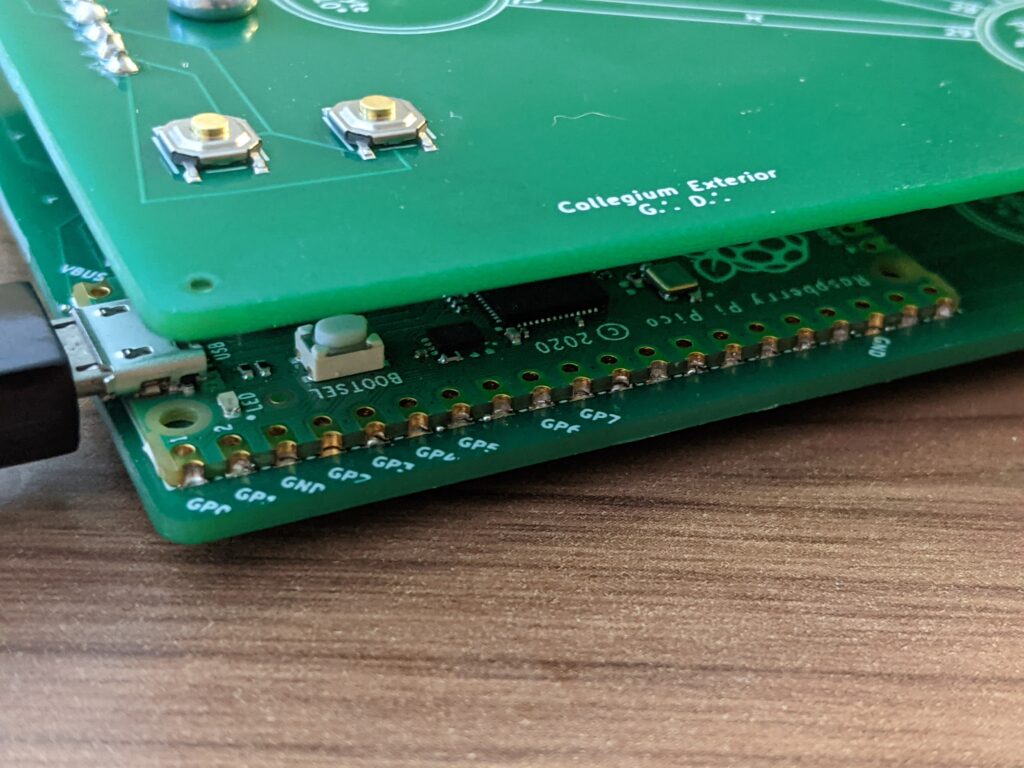
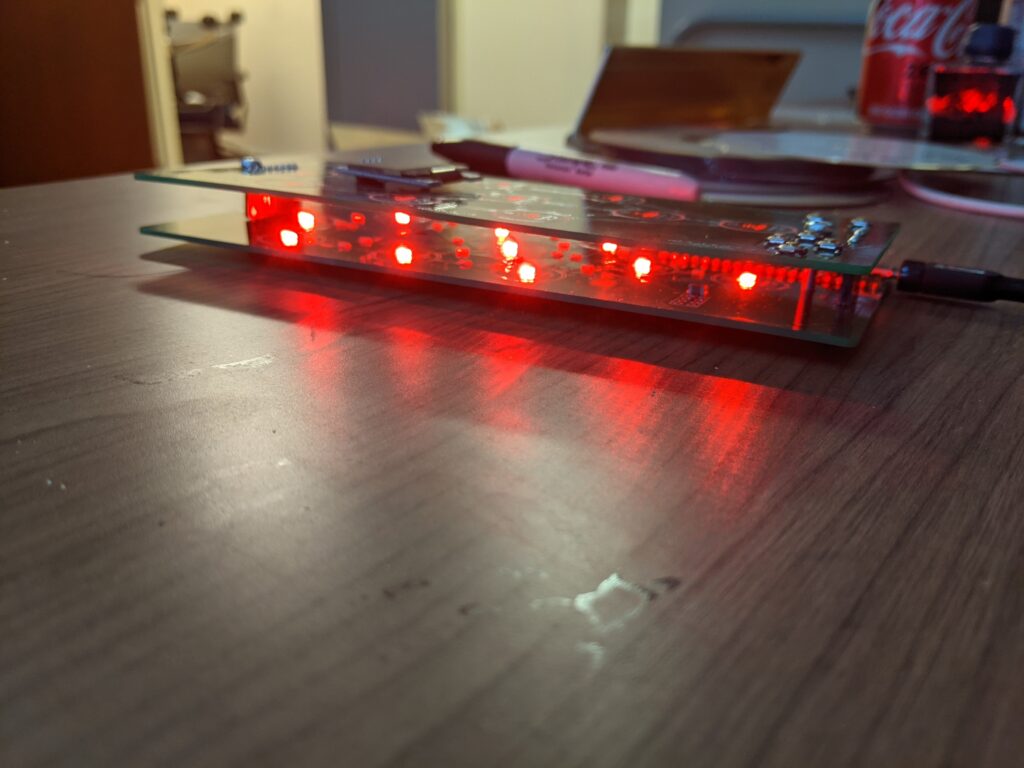
We’re going to go ahead and offer preorders through Shopify. We expect to have them in hand prior to Defcon, and we will bring some out for those who want to buy them in person, but if you’re NOT going this year, and you’d like it shipped to you, that means we have less to carry to Vegas with us. :). The link should be in the sidebar.
Update 2021-07-10: What you’ll get: You’ll get a fully assembled badge, a battery holder and two AA batteries, and a custom lanyard.
Expectations: I 100% expect the LEDs to be fully functional, they were successful on prototype #2. This is our first badge, and by far the most complicated thing I’ve ever designed for fabrication. I got the 1×8 headers lined up right, yay! The M3 screwholes are sufficient, when populated with a long enough M3 screw, to keep the side-to-side wobble in check. I’m 95% certain the OLED will work. I fubar’d the prototype by orientating the 1×8 headers backwards on the top board. That screwed up my testing capabilities for the OLED. Expectations for the wireless transceiver (NRF24L01+) are a bit lower. We haven’t even nailed down exactly what we expect it to do, and I think I ran a trace too close to a pad, causing a short. So unable to test that either. They work fine on the breadboard, though, so we’ll continuing developing and testing with the aim of it working. Be honest, though. You’re buying this for the blinkyshit, or your a dirty occultist who’s up to no good, in which case you can use your magickal wizard powers to make it work (or just cut traces and fix it if it’s wrong in prod).
Mounting the Pico as SMD using the castellated edges was something I wanted to do from the getgo. It means more surface space for artwork, and less annoying thru-holes. It does add a layer of complication, though. Or a challenge. Hell, let’s call it a probletunity. It’s forcing me to up my hot air game. It’s harder, I will say. It’s hard to know when the paste is melted enough underneath to avoid shorts, and I really found myself looking closely in the thru-holes to see the paste bubble up and turn from gray to silver. I also worried that I’d fry nearby electronics, but I think my technique is sound, and I’m using low temp paste. I may try baking one in the T-962 at some point, once I figure out how to add new bake profiles to it. Nope. Too hard. Back to thru-hole for the Pico.
I can’t guarantee we’ll have them in hand for Defcon, as I’m relying on outside entities. But they’ve been great so far, knock on wood. So that’s our goal.
